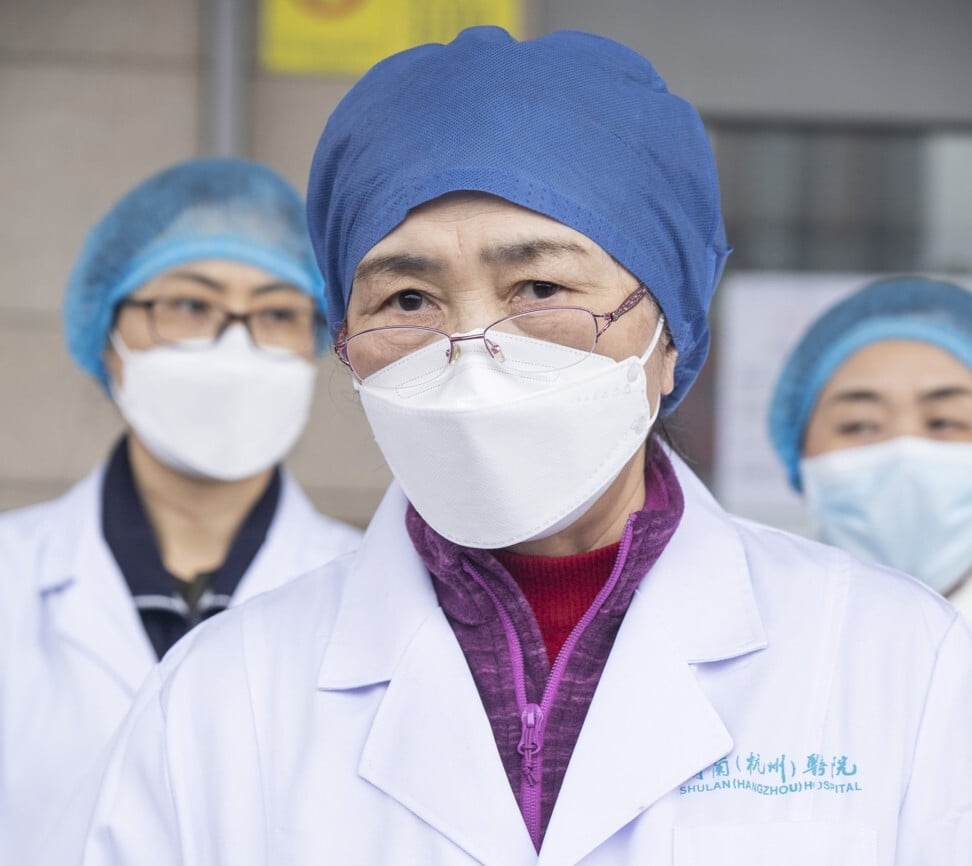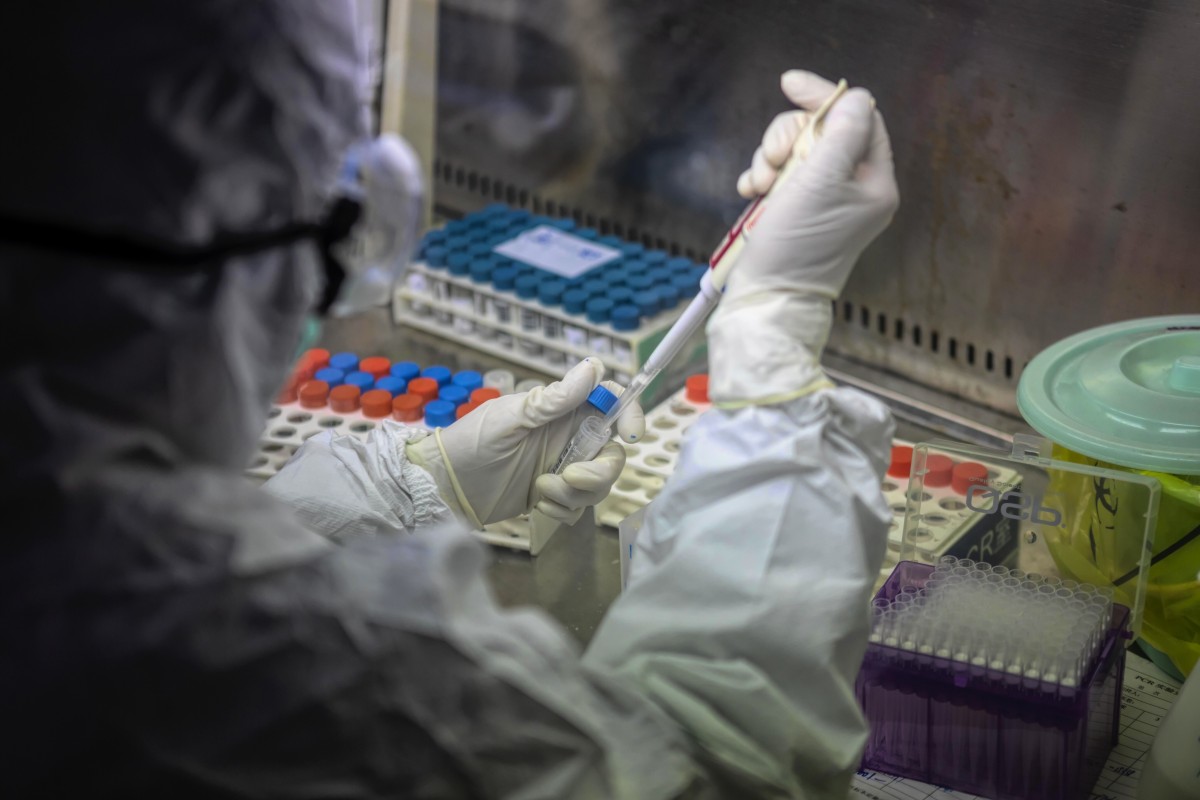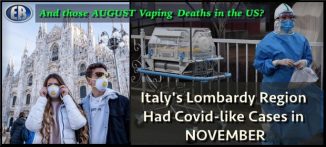
ER Editor: In trying to be very clear about what is claimed in this report, it seems that many strains of what is being called ‘COVID-19’ or SARS-CoV-2 have been found in different regions of the world, and that a strain dominant in a particular region is ‘inherently different’ to strains found to predominate elsewhere. Now the strains seem to be proliferating and mutating. Was this virus therefore ever one single thing to begin with? And where does the biowarfare theory fit into this picture?
The researchers in the study discussed below took 11 randomly selected patients from a region approximately 400 kms east of Wuhan (from Hangzhou on the coast), some of whom showed a deadlier strain of the virus that has apparently been found in ‘most’ European victims, whereas others showed a milder form typical of that found in Washington State. These 11 patients showed a total of 30 mutations, 19 of which were new. The deadlier strains could produce a very much larger viral load, of up to 270 times, and it is the ‘load’ or quantity of a virus which determines sickness, something the PCR test cannot distinguish.
It seems that there could now be strains and mutations of the virus (or viruses) that each number in the thousands, giving rise to a different range and severity of symptoms, although the method of determining this may still not be precise enough.
We remind readers of reports we’ve published showing that Patient Zero’s have never been found in China, South Korea and Italy (we have no information on Iran), and that the US is refusing to share information on its own. This has naturally led to the theory that each location may have been ‘seeded’ with (a particular strain of?) the virus. We also remind readers that cases of this virus may have been showing up in the US and elsewhere much earlier last year, even back to the summer and not far from Fort Detrick. And that some are postulating that all original pre-mutated strains can be found in the US.
On what reasonable basis can even a safe vaccine be developed, given the information that is emerging?
********
Coronavirus’s ability to mutate has been vastly underestimated, and mutations affect deadliness of strains, Chinese study finds
STEPHEN CHEN
They also confirmed for the first time with laboratory evidence that certain mutations could create strains deadlier than others.
“Sars-CoV-2 has acquired mutations capable of substantially changing its pathogenicity,” Li and her collaborators wrote in a non-peer reviewed paper released on preprint service medRxiv.org on Sunday.
Li’s study provided the first hard evidence that mutation could affect how severely the virus caused disease or damage in its host.
Li took an unusual approach to investigate the virus mutation. She analysed the viral strains isolated from 11 randomly chosen Covid-19 patients from Hangzhou (ER: about 400kms east of Wuhan, on the coast) in the eastern province of Zhejiang, and then tested how efficiently they could infect and kill cells.
The deadliest mutations in the Zhejiang patients had also been found in most patients across Europe, while the milder strains were the predominant varieties found in parts of the United States, such as Washington state, according to their paper.
A separate study had found that New York strains had been imported from Europe. The death rate in New York was similar to that in many European countries, if not worse.
But the weaker mutation did not mean a lower risk for everybody, according to Li’s study. In Zhejiang, two patients in their 30s and 50s who contracted the weaker strain became severely ill. Although both survived in the end, the older patient needed treatment in an intensive care unit.
This finding could shed light on differences in regional mortality. The pandemic’s infection and death rates vary from one country to another, and many explanations have been proposed.
Genetic scientists had noticed that the dominant strains in different geographic regions were inherently different. Some researchers suspected the varying mortality rates could, in part, be caused by mutations but they had no direct proof.
The issue was further complicated because survival rates depended on many factors, such as age, underlying health conditions or even blood type.
In hospitals, Covid-19 has been treated as one disease and patients have received the same treatment regardless of the strain they have. Li and her colleagues suggested that defining mutations in a region might determine actions to fight the virus.
“Drug and vaccine development, while urgent, need to take the impact of these accumulating mutations … into account to avoid potential pitfalls,” they said.
Li was the first scientist to propose the Wuhan lockdown, according to state media reports. The government followed her advice and in late January, the city of more than 11 million residents was shut down overnight.
The sample size in this most recent study was remarkably small. Other studies tracking the virus mutation usually involved hundreds, or even thousands, of strains.
Li’s team detected more than 30 mutations. Among them 19 mutations – or about 60 per cent – were new.
They found some of these mutations could lead to functional changes in the virus’ spike protein, a unique structure over the viral envelope enabling the coronavirus to bind with human cells. Computer simulation predicted that these mutations would increase its infectivity.
To verify the theory, Li and colleagues infected cells with strains carrying different mutations. The most aggressive strains could generate 270 times as much viral load as the weakest type. These strains also killed the cells the fastest.
It was an unexpected result from fewer than a dozen patients, “indicating that the true diversity of the viral strains is still largely underappreciated,” Li wrote in the paper.

The mutations were genes different from the earliest strain isolated in Wuhan, where the virus was first detected in late December last year.
The coronavirus changes at an average speed of about one mutation per month. By Monday, more than 10,000 strains had been sequenced by scientists around the globe, containing more than 4,300 mutations, according to the China National Centre for Bioinformation.
Most of these samples, though, were sequenced by a standard approach that could generate a result quickly. The genes were read just once, for instance, and there was room for mistake.
Li’s team used a more sophisticated method known as ultra-deep sequencing. Each building block of the virus genome was read more than 100 times, allowing the researchers to see changes that could have been overlooked by the conventional approach.
The researchers also found three consecutive changes – known as tri-nucleotide mutations – in a 60-year-old patient, which was a rare event. Usually the genes mutated at one site at a time. This patient spent more than 50 days in hospital, much longer than other Covid-19 patients, and even his faeces were infected with living viral strains.
“Investigating the functional impact of this tri-nucleotide mutation would be highly interesting,” Li and colleagues said in the paper.
Professor Zhang Xuegong, head of the bioinformatics division at the National Laboratory for Information Science and Technology at Tsinghua University, said ultra-deep sequencing could be an effective strategy to track the virus’ mutation.
“It can produce some useful information,” he said.
But this approach could be much more time consuming and costly. It was unlikely to be applied to all samples.
“Our understanding of the virus remains quite shallow,” Zhang said. Questions such as where the virus came from, why it could kill some healthy young people while generating no detectable symptoms in many others still left scientists scratching their heads.
“If there is a discovery that overturns the prevailing perception, don’t be surprised.”
************
Original article

••••
The Liberty Beacon Project is now expanding at a near exponential rate, and for this we are grateful and excited! But we must also be practical. For 7 years we have not asked for any donations, and have built this project with our own funds as we grew. We are now experiencing ever increasing growing pains due to the large number of websites and projects we represent. So we have just installed donation buttons on our websites and ask that you consider this when you visit them. Nothing is too small. We thank you for all your support and your considerations … (TLB)
••••
Comment Policy: As a privately owned web site, we reserve the right to remove comments that contain spam, advertising, vulgarity, threats of violence, racism, or personal/abusive attacks on other users. This also applies to trolling, the use of more than one alias, or just intentional mischief. Enforcement of this policy is at the discretion of this websites administrators. Repeat offenders may be blocked or permanently banned without prior warning.
••••
Disclaimer: TLB websites contain copyrighted material the use of which has not always been specifically authorized by the copyright owner. We are making such material available to our readers under the provisions of “fair use” in an effort to advance a better understanding of political, health, economic and social issues. The material on this site is distributed without profit to those who have expressed a prior interest in receiving it for research and educational purposes. If you wish to use copyrighted material for purposes other than “fair use” you must request permission from the copyright owner.
••••
Disclaimer: The information and opinions shared are for informational purposes only including, but not limited to, text, graphics, images and other material are not intended as medical advice or instruction. Nothing mentioned is intended to be a substitute for professional medical advice, diagnosis or treatment.



